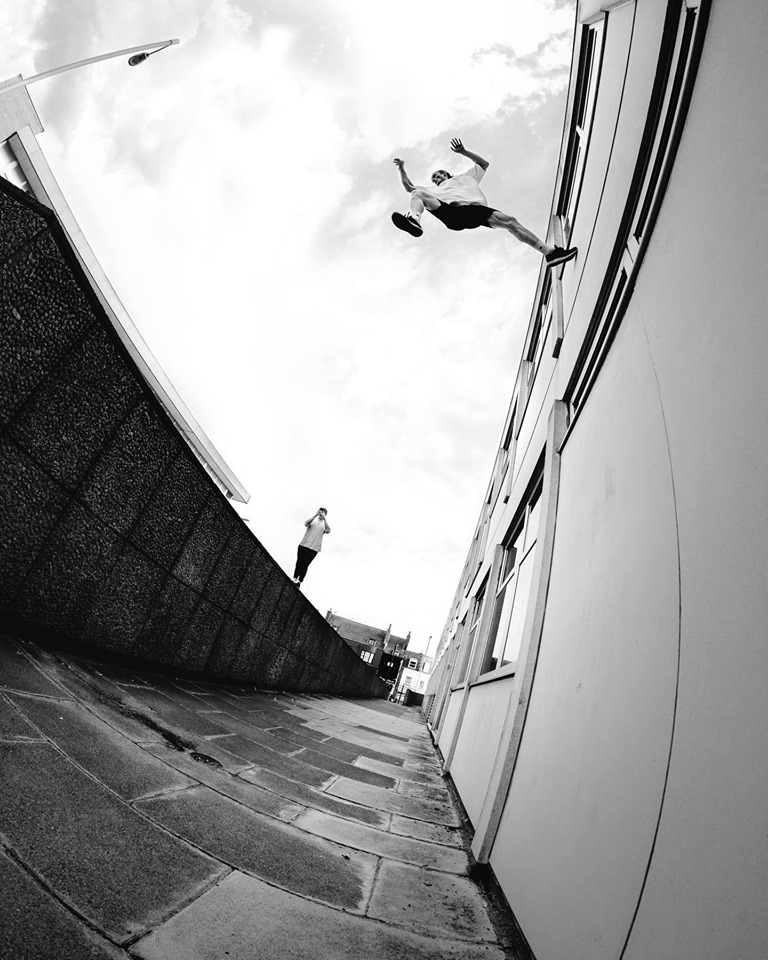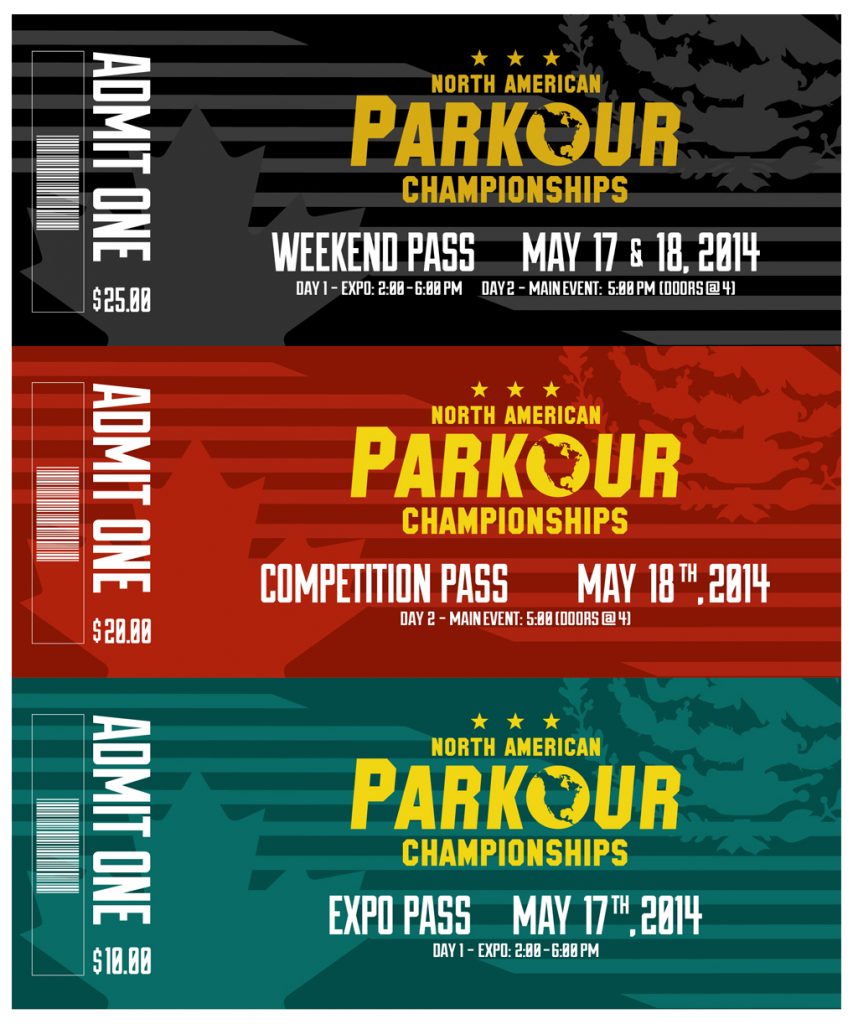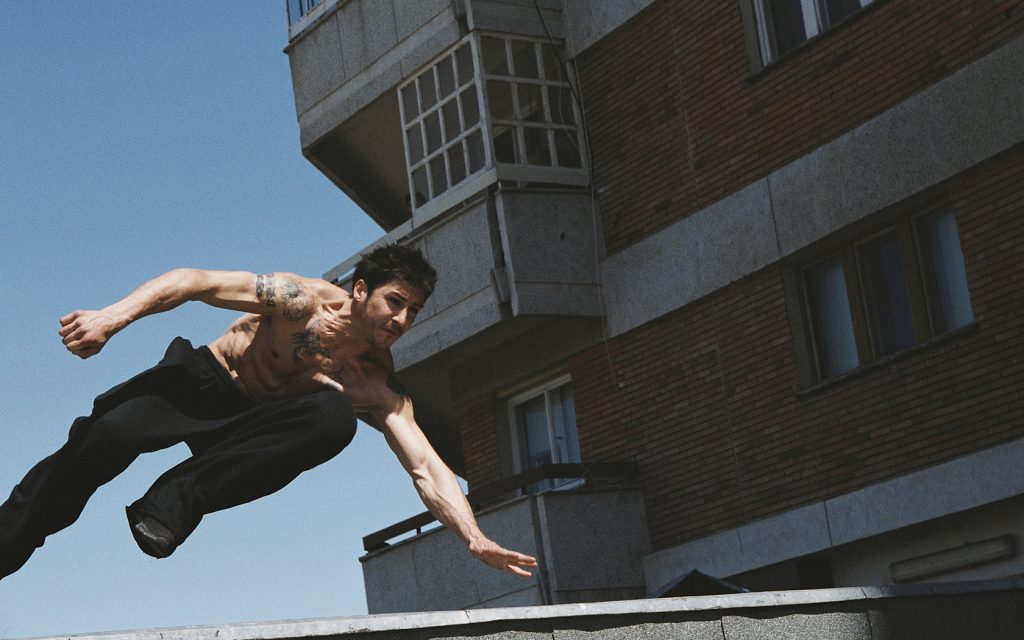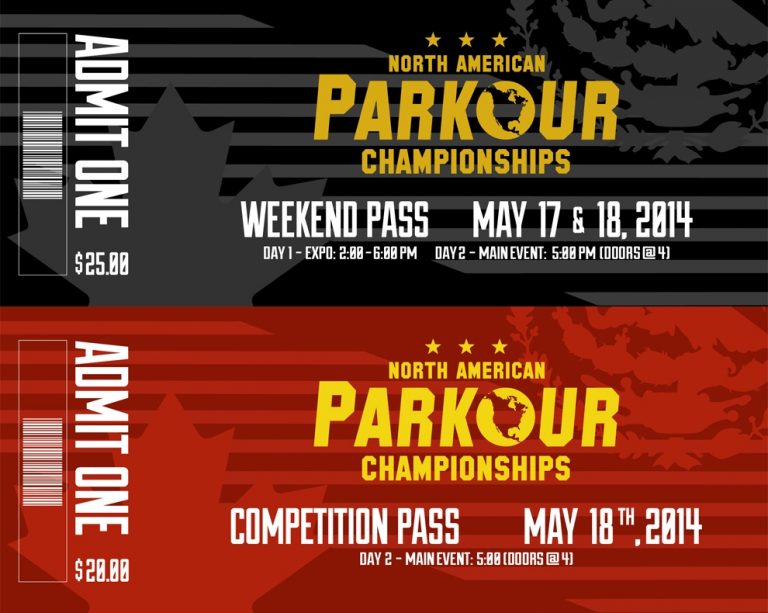If you have not read part 1 of this article, click here to read it.
Speed….
Like the style competition, the speed comp, as currently formatted, is pretty miserable! And the reason it’s awful is the SAME EXACT REASON that it has been awful for almost a decade at virtually every Parkour competitions ever held. The problem? The courses are ALWAYS. TOO. SHORT.
The speed comp isn’t a hundred-meter dash, but it sure does last about the same length. The top three finishes at the semi-finals at NAPC7 were only 14 seconds long! Why are the courses so short, you ask? There are actually two reasons:
#1. The courses are poorly designed
#2. The athletes are awesome.
Let’s start with #2. This is an obvious fact, but event organizers constantly act as if they are completely oblivious to the athletes’ talent. The reason the speed course only lasts 14 seconds (which was the length of the top 3 speed runs in the semi-finals) is because people like Joseph Hendo are beasts! It would take me 35 seconds to make it through that course IF I could even make some of the jumps. Hendo does it in 14 seconds and that’s impressive! But it’s not entertaining.

The problem with a quick speed course is there is no room to appreciate the skill, and no places to really separate talent. When .1 seconds separate the top two or three competitors AND the race only lasts 14 seconds, what is there to really compare? What is there to really improve on? Not a lot.
One way to solve this problem of short courses is simply to make the courses longer. Make a course that would take a good Parkour athlete 90 seconds to get through, and then it will take guys like Hendo 45 seconds to complete. Bravo! Now we are on to something.
The second way to make speed courses longer is (and this takes us back to problem #1), do a better job of designing the courses. Due to the skill of the athletes today speed run comps have basically devolved into “who can stride the smoothest and who can be the quickest running on bars.” I ask, where is the room for creative innovation and style? Even with the amazing athleticism and precision that it takes to run on bars and stride in zig-zag patterns, it’s so one dimensional.
How about adding a 15-foot drop into the run where one person can take it and roll and the other has to do some sort of climb down? Or how about adding some complex wall runs or complex consecutive bar maneuvers that take away momentum and force people to have to really adjust speed and link movements in unexpected ways? Or how about not letting the athletes practice the course so it becomes improv and a true test of adaptability and speed? One of these things (or some mix of these things) is what speed courses need, and of course this will naturally lead to the courses taking longer to complete as well (solving the main problem). It’ll make the events way more entertaining for the viewers, not to mention way more challenging and fun for the competitions.
One last note on speed run comps: I understand that one of the limitations to speed runs is the ability to custom design courses. Origins Parkour used their gym and many of their unmoveable obstacles for the NAPC7 speed comp. Obviously that means there are massive limitations to the course design since they only have so much space and they aren’t going to redesign their gym for it. But even with this being the case, all you have to do is make the course 3 times longer, and we have a strong solution. Wherever the course ended? Keep it going! And to be frank, the FIG Parkour comps HAVE the money AND they’ve designed their courses for scratch AND in my opinion they are still too short and uncreative. So as far as I can tell, no one at the event-organizing level in the PKFR world understands this speed-course concept, which is exactly why I am not calling it out. We need a paradigm shift in how we look at this event.
My advice to the event organizers is…
make the course 2 or 3 times as long, and be more creative in your designs. Design courses that allow for noticeably creative choices and perhaps even consider designing aspects that force noticeably different choices based on an athlete’s skill levels or momentum at that point in the course. Think outside the box and find something no speed course designer has found before. And,again, if you can’t change anything else, then just make them longer.

Summary…
I see some major problems in PKFR competitions today as exemplified at NAPC7. Mostly, style competitions have become boring because everyone is copying each other and trying to clunkily link tricks for a short amount of time instead of finding true “style” and “art” in the movement; and the speed courses are too short and too poorly designed to provide any real entertainment, comparison of athleticism, or for style and unique choices to emerge.
Some of these issues can be addressed by the athletes (like I said, if you’re competing in style, change up your style routines), but at the end of the day it’s really up the competition organizes and judges to cement the change by organizing the events differently and rewarding these other aspects. If those things get are adjusted then I think we’ll really start to see unprecedented progress in the viewership of these events.
Looking ahead…
I believe that the key for Parkour to grow is for it to have a deeper resonance so that it can extend beyond the Parkour world. If the only people who are entertained by Parkour events are core community people, then the sport will be severely limited since its audience is severely limited. As it stands right now, I think the sport is limited because of some basic problems in how events are designed which majorly limit their entertainment value, resonance, and potential. Let’s make these small and powerful changes, and then we’ll have something that not only the Parkour world can thoroughly enjoy, but those outside of it can enjoy and applaud as well. I know that’s what I want.
P.S. Oh, what about the skill event at NAPC7? I like the skill event a lot. No critiques. From my perspective, NAPC nails this one. Honestly, I’m still impressed by how cool the concept is.


